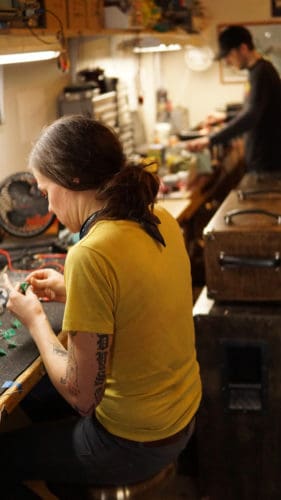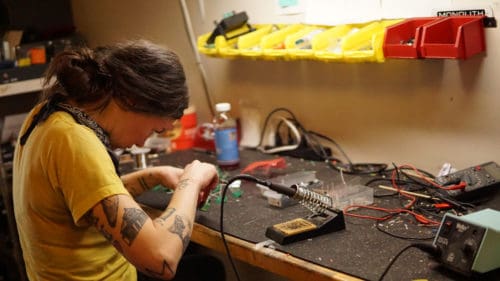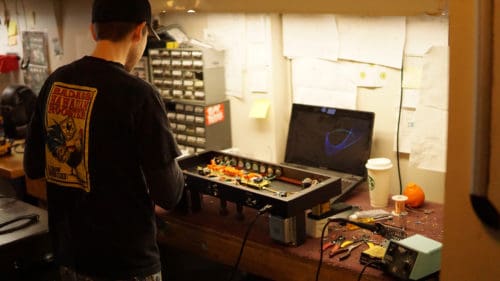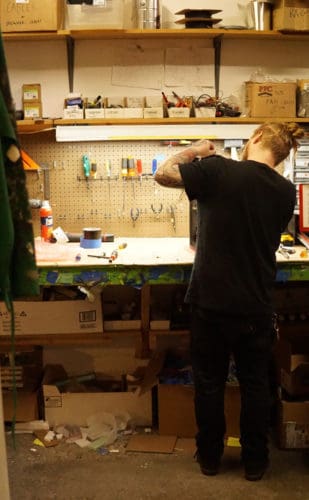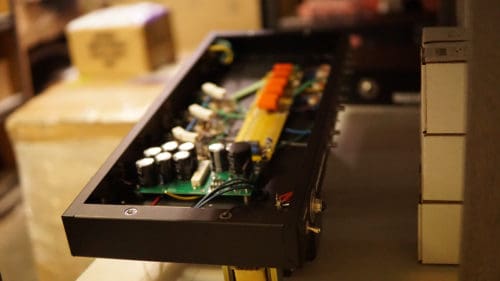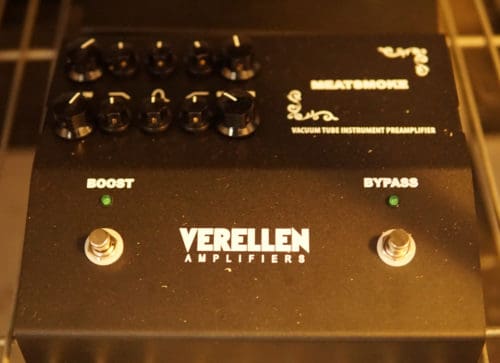If you follow our podcast you might recall Episode #54 (iTunes, LibSyn), when amplifier builder Ben Verellen sat down with Ryan Richter to talk about his burgeoning business building seriously heavy amplifiers at Verellen Amplifiers. Ben’s still cranking away, stretching out with variations on his designs that incorporate everything from Class D power sections (pumping out as much as 1400 watts!) to low-wattage, single-ended combos. Ben’s been adding to his list of collaborations, as well: When Ryan sat down with him in 2012, he’d begun working with Seattle’s Michael Biller to produce a line of old school jazz amps–SeQuel Amplifiers–inspired by classic Gibsons, and more recently he’s worked with The Music Zoo developing a new twist on the Club-to-Bedroom combo, the “50/5,” which has two separate power sections (50 watts for the Club, 5 watts for the Bedroom). That particular project caught our eye, and since he’s pretty much just down the street, we figured maybe it’s time to check in with Ben, get a look at his shop and maybe a peek inside Bar House, the fantastically-themed drinking establishment he recently opened above his basement shop…
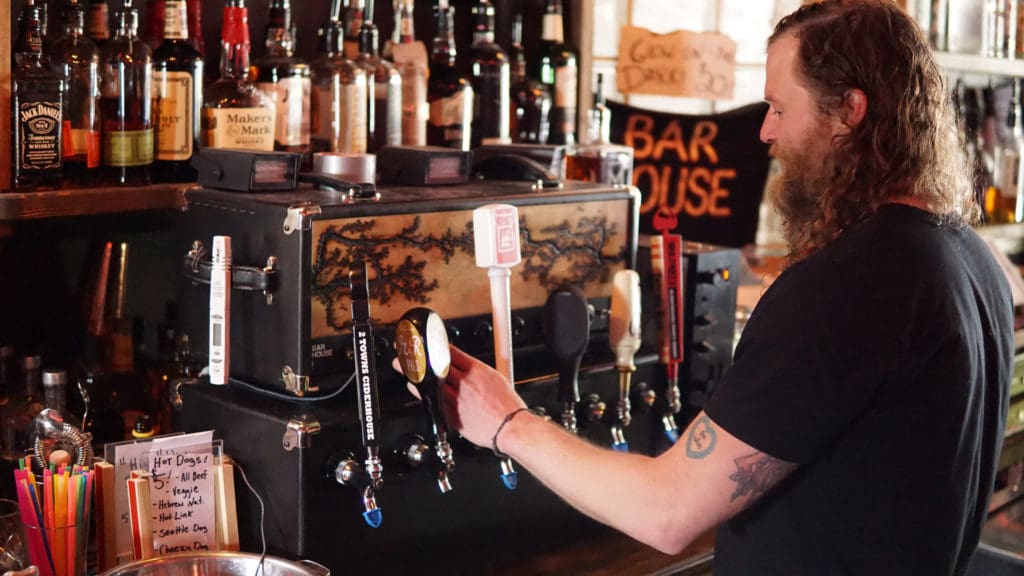
Verellen in Bar House, with its taps and lights/audio switchboard housed in amplifier heads.
Fretboard Journal: I was poking around and I saw your little tube stash. Seems like mostly 6550s and EL34s…
Ben Verellen: Yeah. Those are for a couple of popular amps that we do, like the Meatsmoke, a big 300-watt thing. Tung-Sol 6550 is my favorite big bottle tube for that. And then we do some 100-watt kind of big guitar amps that use EL34s, a British vibe thing. But we do all kinds of stuff. We’ll do 6V6s, EL84s, 6L6s, KT88s, KT77s… whatever people want. It’s all over the map.
FJ: Where are you sourcing your tubes?
BV: I get most of my stuff from a distributer called CE. But as far as brands, it just depends. I like JJ’s stuff–their pre-amp tubes are pretty consistent. And I’ve just used them for so long I know what to expect from them. I know how to design around them. So when somebody orders a specific thing, and they want it this way, I can buy those tubes and I know what they’re going to do, then I can tweak the circuitry around it to make it do specific things.
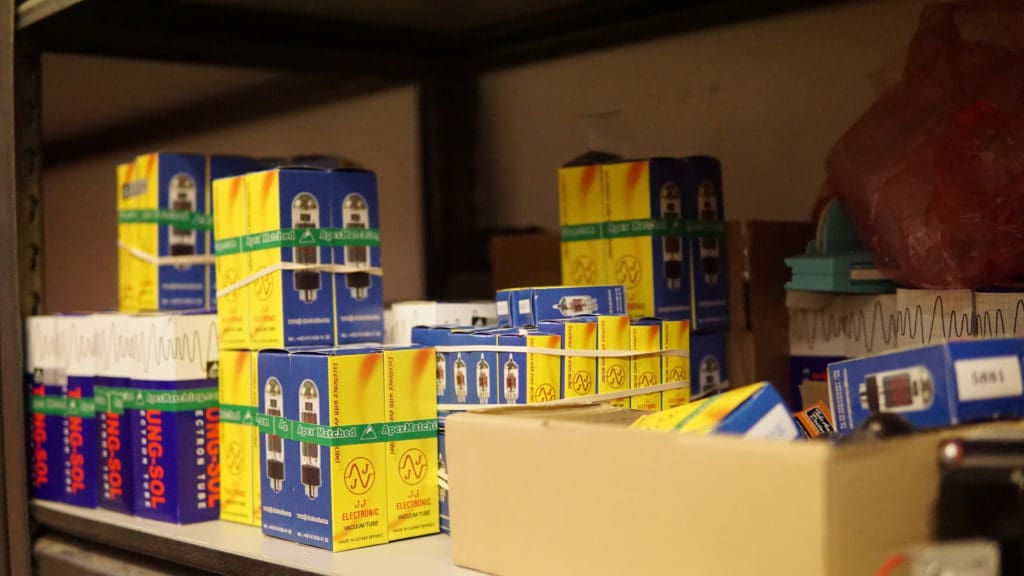
FJ: Your amps have a very distinctive look, too. No Tolex, the branded wood… Was that an ease-of-use thing that became an identifying thing, or was it intentional from the get go, like, “I don’t want to use Tolex…”?
BV: There’s a speaker cabinet company out of Chicago called Emperor Cabinets. They were a couple of years ahead of us, and they weren’t doing Tolex stuff. They were doing just these really nice joinery boxes that they were finishing well. I just thought it was a cool look and it was proof to me that you could do it that way. It’s different.
And I had a buddy that was a good carpenter. I didn’t have a buddy that was good at doing Tolex! And so, as with many things with us, it just what we had access to, we can do that and move on… It has a different aesthetic to it, so hopefully it’ll stand apart. But people do order Tolex amps from us, and I do have a guy that does Tolex for us now if people want it.
FJ: Beyond their outward appearance, what distinguishes Verellen amps from others?
BV: I think if there’s anything unique about what we’re doing, it’s that we’re just doing customized stuff down to the T. As much as we tried, it didn’t catch on where we could just spit out models A, B, C and D. It is more about having a conversation with every single customer and figuring out what their weird idea is about an amp and trying to work through that with them.
We’ve probably done something like 850 amps as it is right now. And I would say probably 70 percent of those or so are unique, custom one-off builds.
“You know, most of this guitar amp thing is people chasing nostalgia…”
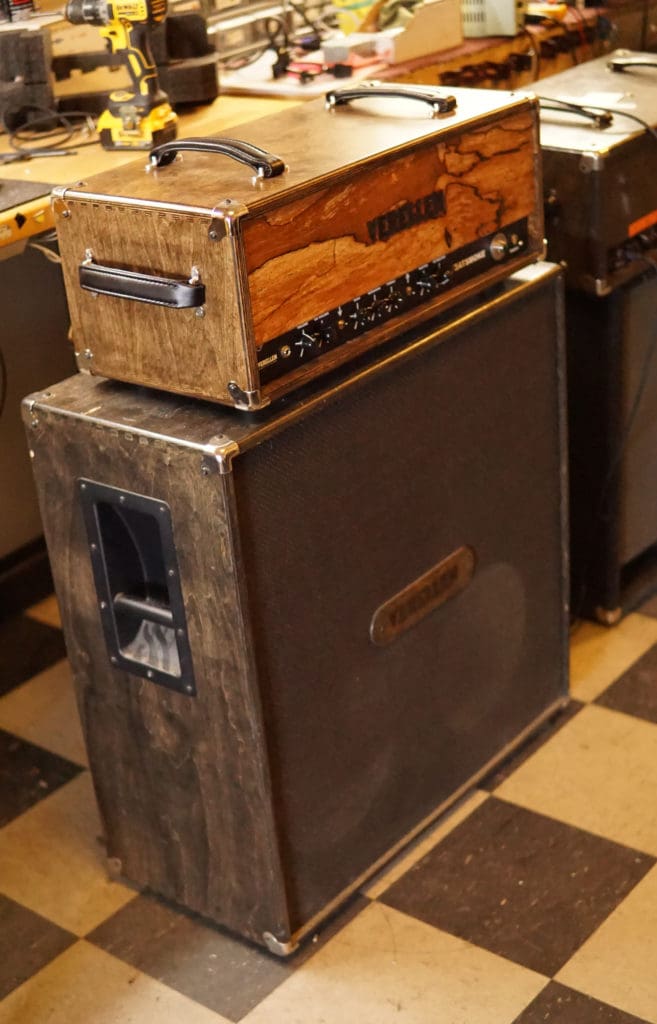
Something like the ‘flagship’ of the Verellen line of amplifiers, the 300 watt, all tube Meatsmoke, now also available as a 1400 watt Class D hybrid.
FJ: So you don’t really think of having a “Verellen sound…”
BV: I’m a big fan of real, big cleans. I like vintage amps that were originally designed to be bass amps but make for really cool guitar amps that have a lot of low end. That’s kind of my starting place for my personal taste.
So even if somebody wants something that’s like a shredder or high gain, a kind of flamethrower sort of thing, I’m always thinking about when they click on that clean channel, I want it to sound big. And even when they’re in their overdrive channel, I usually tend to want a little bit more low end than a lot of these amps that are popular for high gain stuff have. So that’s something that my ear wants to hear.
FJ: So is that big, clean thing what led you into the jazz combo realm, with SeQuel?
BV: Michael Biller came to me with an idea the way any customer might, but he said, “I want to start a business making these jazz amps, and I want it to be based off this classic Gibson GA-30.” He uses some peculiar tubes and circuitry that you don’t find in a lot of modern-built amps. So he started there and then we just kind of worked through and designed them.
We’ve done three or four different designs over the years. I make them for him and he sells them through his business. I build it to where I think it sounds cool, and then he comes in with his seven-string guitar and plays jazz. He has a different ear for it, so I’m learning from him as I go through that, too.
